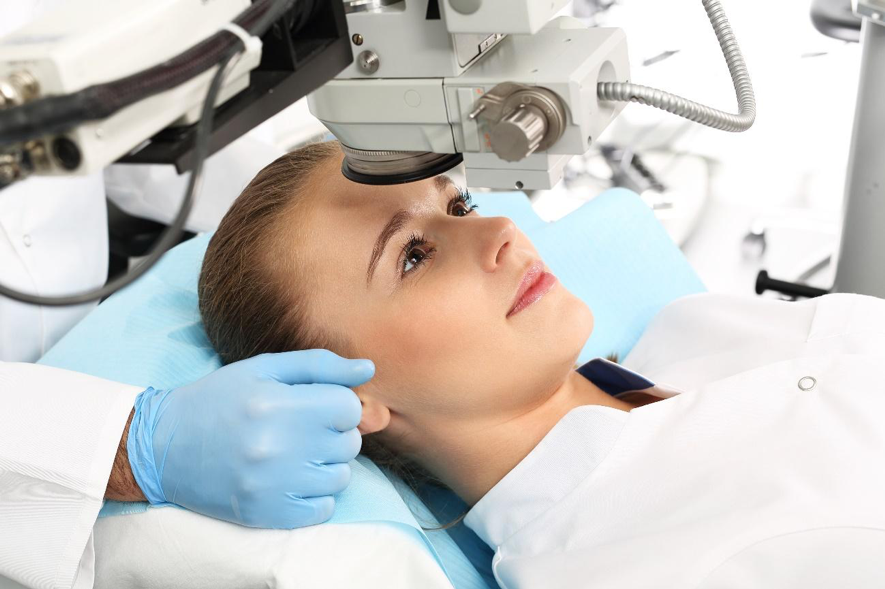
Optical Anti-Aging for Cataract over 50s
Share

There are a variety of eye diseases. Known ones are cataract, glaucoma, age-related macular degeneration (AMD), Diabetic Retinopathy, Dry Eye, Keratitis, etc. In this article, we will explain about cataract which could happen to all of us as we age.

Symptoms of Cataract
Cataract is a disease that crystalline lenses get white and cloudy and lowers your eyesight as you age. Crystalline lens works as a camera lens inside your eye and focuses by collecting external light. It is originally transparent tissue, but when it gets white and cloudy, collected light does not reach the eyeground and the following symptoms are triggered to occur.
- Blurry vision over the entire view field
- Lower or Loss of vision
- Glaring vision
- Vision differs when it is dark and under the light
Causes of Cataract
Crystalline lens is made mainly with protein and water. Protein changes whiter and cloudy as it gets influenced by many reasons such as aging and long time of exposure to UV, and it will result in vision loss.
Cataract is caused by many factors but mostly by aging-related factors. It differs from person to person, but cataract develops in many older people as crystalline lens gets cloudy as we age.
Treatment for Cataract
Treatment for cataract gets never be too late no matter how the symptoms progressed. However, it can develop another disease at the same time. Please consult your ophthalmologist if you observe the symptoms. The treatment varies by the progress stages.
If symptoms do not affect your work or everyday lifeIn its early stage of vision loss or blurry vision, eye-drop treatment is fundamental with pirenoxine eye drops (Product name: Kary Uni ophthalmic suspension) or Glutathione eye drops (Product name: Tathion for Ophthalmic). However, the medicine only stops its development but doesn’t make your crystalline lens transparent again.
If symptoms affect your work or everyday lifeIf you have issues with work or daily life, surgical operation is the next option. As of now, phacoemulsification is widely used operation. In this surgery, ultrasonic wave breaks and removes cloudy crystalline lens, and it will be replaced by intraocular lens which is an artificial crystalline lens. Cataract surgery is one of the safest surgeries that most people can take without any concerns. However, you may still need to correct your vision with glasses since artificial crystalline lens does not have a focus adjusting function.
Eye drop medicine for cataract: Kary Uni ophthalmic suspension
Effects of this medicineThis medicine competitively inhibits quinone compound binding to water-soluble protein of the lens and prevents the lens protein degeneration in order to suppress the lens to become cloudy. It is usually used to slow the progression of early senile cataract.
Dosing scheduleIn general, shake the bottle well, and apply 1 to 2 drops at a time, 3 to 5 times a day. Strictly follow the instructions.
Precautions while taking this medicineThis medicine may cause staining your clothes when in contact accidentally. Wash with water as quickly as possible in this case.
Possible adverse reactions to this medicineThe commonly reported adverse reactions include blepharitis (erosion of eyelids), contact dermatitis, diffuse superficial keratitis (eye pain, focus disorder, foreign body sensation in eyes), bloodshot eyes, conjunctivitis, stinging/itchy eyes, blurred vision, eye mucus, lacrimation, and abnormal sensation in eyes. If any of these symptoms occur, consult with your doctor or pharmacist.
Storage conditionsKeep out of the reach of children. Store away from direct sunlight and heat.
How to prevent cataract
There are two self preventive approaches. One is not to get lifestyle-related diseases such as diabetes. Diabetes rapids the progression of cataract even if you are young. It is important to watch what you eat and exercise regularly to prevent lifestyle-related diseases. Another factor you want to avoid is UV. Wearing sunglasses is not enough to shut out the UV coming through the gap between eyes and glasses. You want to wear a wide-brimmed hat in addition to sunglasses. Especially when the sun is located lower in the morning and evening, the sun rays directly comes into your eyes, and you need sunglasses. When the sun is located high in the middle of the day, hats prevents UV effectively.
Summary
In this article, we mainly discussed about cataract. We hope this article helps you to prevent the risk of cataract or slow down its progress.We all have the risk of this disease as we get older. Let’s remember that preventing UV exposure to your eyes and lifestyle-related disease would help us stay away from this disease.
